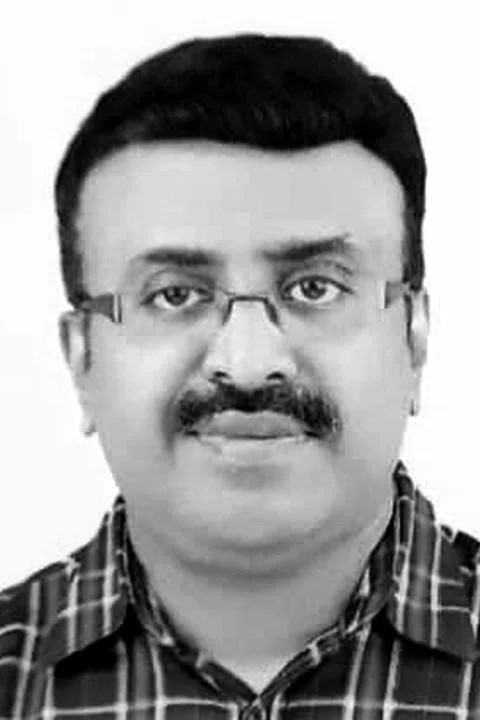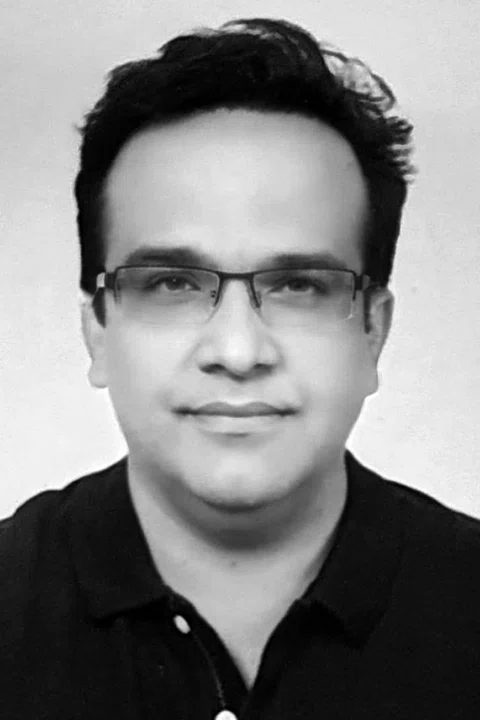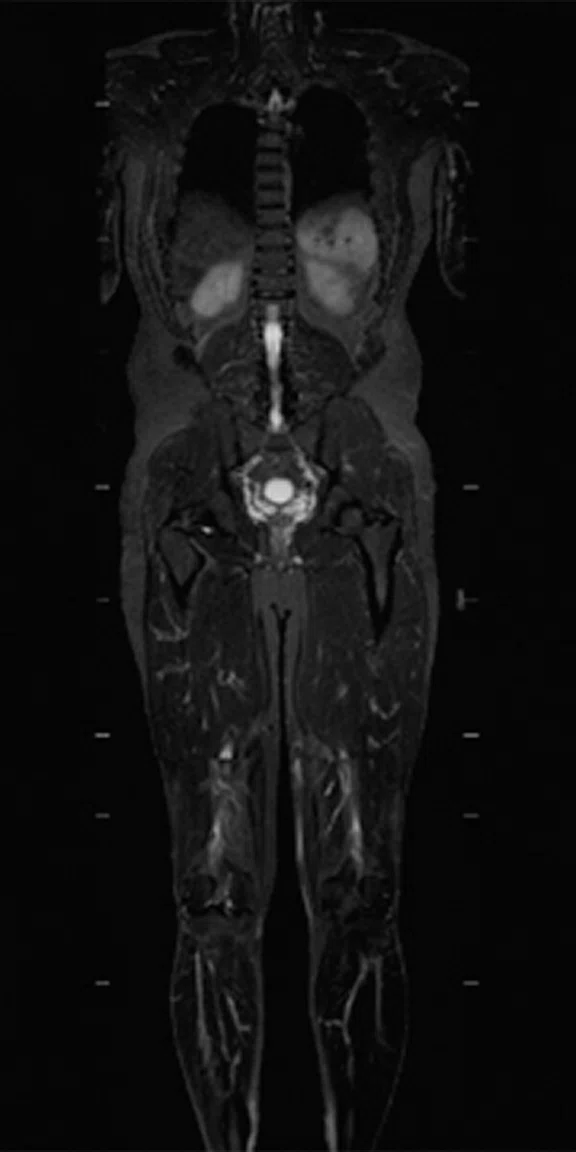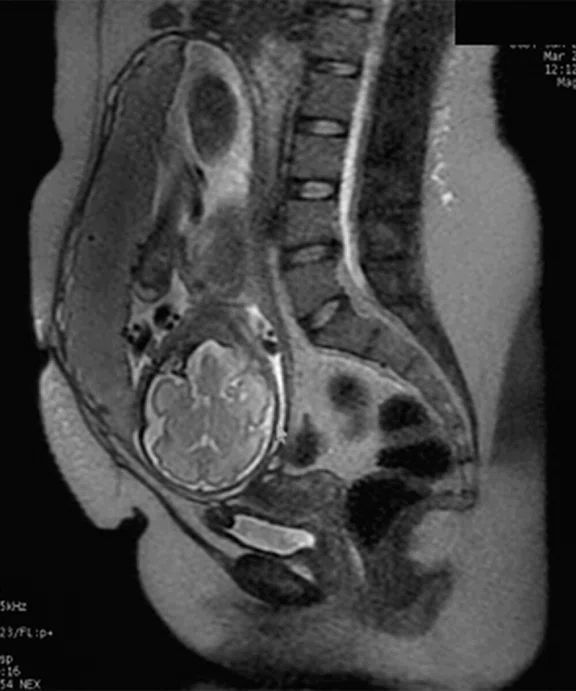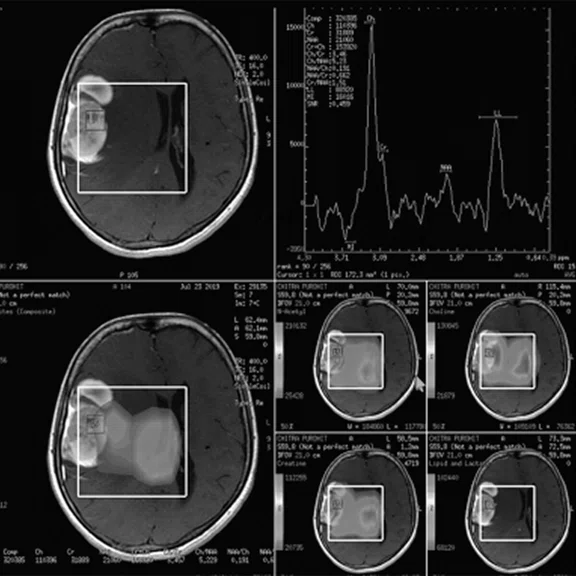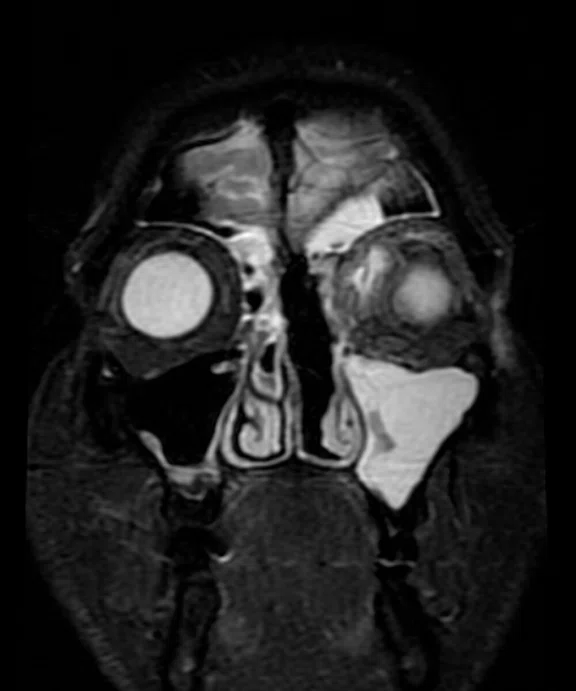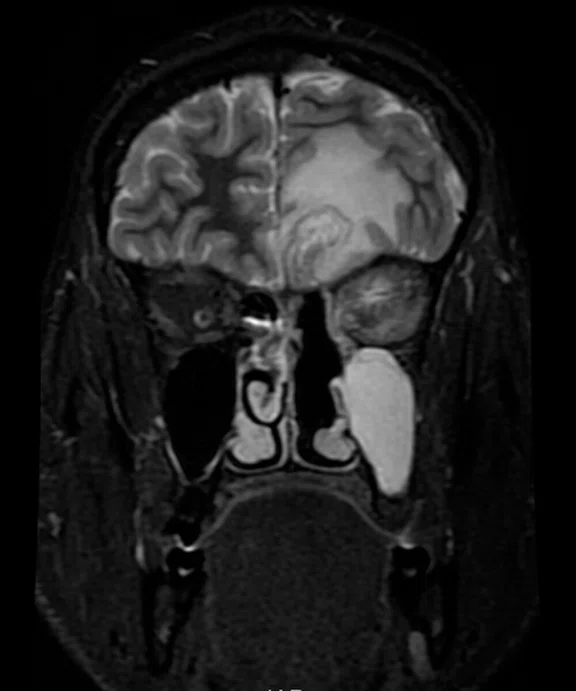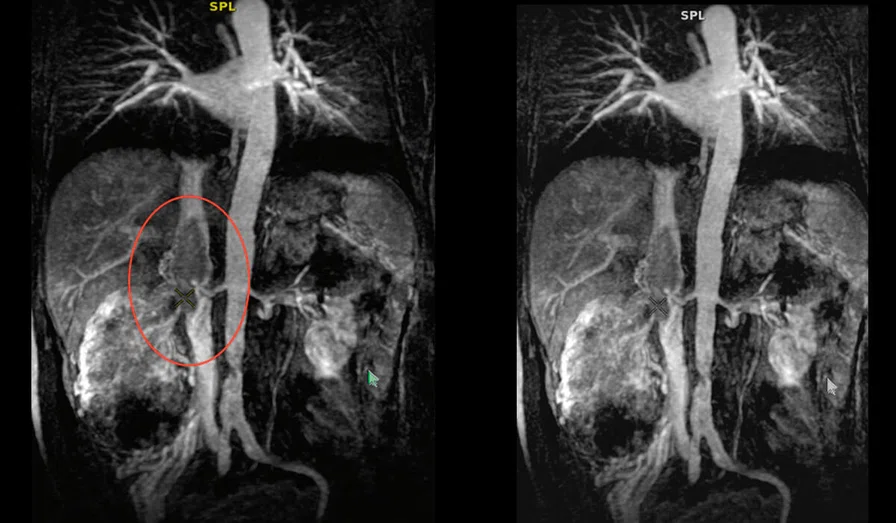A
Figure 2.
Digital Expert provides remote guidance to optimize the PNS protocol for this patient. (A, B) Coronal STIR, (C, D) axial STIR and (E) coronal T1 post-contrast FatSat images. Images courtesy of CHL Indore, Indore, India.
B
Figure 2.
Digital Expert provides remote guidance to optimize the PNS protocol for this patient. (A, B) Coronal STIR, (C, D) axial STIR and (E) coronal T1 post-contrast FatSat images. Images courtesy of CHL Indore, Indore, India.
Table 1.
During the COVID-19 pandemic, the use of Digital Expert increased exponentially, providing training and assistance when on-site clinical applications were not possible.
A
Figure 1.
Whole-body imaging, (B) fetal MR and (C) advanced brain spectroscopy post-processing performed with remote applications support via Digital Expert.
B
Figure 1.
Whole-body imaging, (B) fetal MR and (C) advanced brain spectroscopy post-processing performed with remote applications support via Digital Expert.
C
Figure 1.
Whole-body imaging, (B) fetal MR and (C) advanced brain spectroscopy post-processing performed with remote applications support via Digital Expert.
C
Figure 2.
Digital Expert provides remote guidance to optimize the PNS protocol for this patient. (A, B) Coronal STIR, (C, D) axial STIR and (E) coronal T1 post-contrast FatSat images. Images courtesy of CHL Indore, Indore, India.
D
Figure 2.
Digital Expert provides remote guidance to optimize the PNS protocol for this patient. (A, B) Coronal STIR, (C, D) axial STIR and (E) coronal T1 post-contrast FatSat images. Images courtesy of CHL Indore, Indore, India.
E
Figure 2.
Digital Expert provides remote guidance to optimize the PNS protocol for this patient. (A, B) Coronal STIR, (C, D) axial STIR and (E) coronal T1 post-contrast FatSat images. Images courtesy of CHL Indore, Indore, India.
Figure 3.
A contrast-enhanced MRA of the IVC was scheduled on a SIGNA™ Creator 1.5T MR system. Using Digital Expert, GE provided remote support every step of the way. Images courtesy of the Doctor’s Diagnostic Centre/DDRC Nilambur, Kerala, India.
result


PREVIOUS
${prev-page}
NEXT
${next-page}



Subscribe Now
Manage Subscription
FOLLOW US
Contact Us • Cookie Preferences • Privacy Policy • California Privacy PolicyDo Not Sell or Share My Personal Information • Terms & Conditions • Security
© 2024 GE HealthCare. GE is a trademark of General Electric Company. Used under trademark license.
IN PRACTICE
On-demand solution brings the expert on site digitally
On-demand solution brings the expert on site digitally
Growing patient volumes, a shortage of radiologists, more complex cases and rapidly advancing technology are challenging radiology departments throughout the world. The COVID-19 pandemic exacerbated these issues with the inability for most centers to have on-site training, education and software installation. Fortunately for GE Healthcare’s MR customers, the company was already working on a solution.
Growing patient volumes, a shortage of radiologists, more complex cases and rapidly advancing technology are challenging radiology departments throughout the world. The COVID-19 pandemic exacerbated these issues with the inability for most centers to have on-site training, education and software installation. Fortunately for GE Healthcare’s MR customers, the company was already working on a solution.
Digital Expert Access is GE Healthcare’s real-time, virtual solution that enables collaboration among all teams, within a hospital or across multi-site health systems. Now staff members can easily communicate within their network anytime and anywhere to share advice, expertise and best practices, provide training and gain remote access to devices in the scan room to provide immediate help. GE’s highly experienced application experts deliver a one-on-one, personalized and hands-on learning experience that helps providers maximize the use of their equipment and utilize its functions and features to full potential. In situations where continuous medical education (CME) of radiographers and technicians is not readily accessible, Digital Expert is an ideal solution to complete the training.

Table 1.
During the COVID-19 pandemic, the use of Digital Expert increased exponentially, providing training and assistance when on-site clinical applications were not possible.
Digital Expert can be used to support customers with:
- Enhancing the technologist(s) skills after an installation or software upgrade
- Resolving artifact issues
- Continuous improvement of image quality through protocol optimization and image quality audits
- Support for advanced applications in cardiac, neuro or body imaging
- Image post-processing.
Remotely optimizing protocols and images
Mucormycosis is a rare but serious fungal infection caused by a group of molds called mucormycetes that affects the sinuses or the lungs after a person inhales the fungal spores. While the fungi are not harmful to most people, those with weakened immune systems are more susceptible to infection.
CHL Indore in Indore, India is a 500-plus bed hospital with a radiology department that sees upwards of 300 patients each day. In June 2021, a patient was referred for an MR exam with suspicion of mucormycosis. The department reached out to GE for support to optimize the paranasal sinuses (PNS) protocol for this patient.
With the assistance of GE via Digital Expert, the radiology team at CHL Indore optimized the protocol with the appropriate slice thickness and field of view to visualize the extent of inflammation into the orbits and brain. Further, GE’s clinical applications team recommended changing the type of sequences used. This included using the STIR sequence rather than T2 FatSat to reduce susceptibility artifacts, which can be common in these type of exams due to orthodontic appliances as well as the boundary of aircontaining PNS. Also, a T1 post-contrast FatSat sequence was added as part of the mucormycosis protocol (Figure 2).
"We received superior image quality post optimization by the remote applications team, which helped us to better visualize the extent of inflammation for mucormycosis patients,” says Ravi Masand, MBBS, MD, Director of the Department of Radiology at CHL Indore.
Assisting a new technologist
MR angiography (MRA) is an exam that requires precision to capture the highest quality images of the contrast bolus. Often, more senior technologists will perform these exams due to the complexity.
However, in May 2021, senior technologists were on leave at the Doctor’s Diagnostic Centre/DDRC Nilambur in Kerala, India, when a contrast-enhanced MRA exam of the inferior vena cava (IVC) was scheduled on a SIGNA™ Creator 1.5T MR system. Recognizing the need to provide immediate training, the DDRC radiology team reached out to GE’s remote support to assist the new technologist who had not performed this type of exam.
Through Digital Expert, GE provided remote support every step of the way for the MRA of the IVC, including patient and coil positioning, guidance on the appropriate anatomic sequences and assistance on performing both the non-contrast MRA and the dynamic contrast enhanced MRA (Figure 3).
“We appreciate the timely remote support rendering excellent image quality and hand-holding of our technologist through each and every step,” said Jossy George, MD, senior radiologist, DDRC Nilambur.












